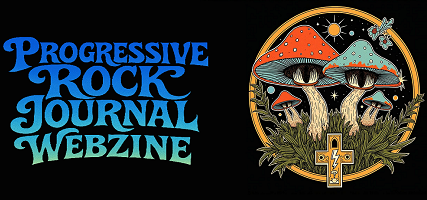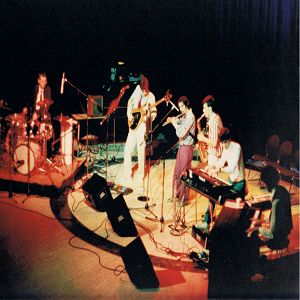It’s a rare privilege to speak with Miriodor, Canada’s pioneering exponents of Rock in Opposition and Avant-Garde Progressive Rock. With a career spanning more than four decades, the band has consistently blurred the boundaries between Jazz, Classical, Folk, and Rock, earning global acclaim and a devoted following. Their newly released “Live ‘97” (Cuneiform Rune 3402) offers a glimpse into a seminal performance recorded at Quebec City’s Salle Multi de Méduse during the 1997 Soirées de Musique Fraîche. Here, Miriodor presents a live reimagining of their groundbreaking Elastic Juggling / Jongleries Elastiques album, showcasing both their virtuosic musicianship and theatrical flair. We spoke with members of the band to explore the album, the live experience, and the enduring legacy of their unique sound.
“Live ‘97” captures a performance from over two decades ago. What was it like revisiting this concert for release now, and did listening back evoke any particular memories?
PG: “Well, this was 28 years ago. We had this recording all that time, and I listened to it a few times over this period. I liked the performance but the original recording needed some work for a release. A good friend of mine (Renato Moraes) kept telling me over the years that it was a damn good performance and that it should be released. This show marked a particular milestone in Miriodor evolution with the addition of Nicolas Masino on bass and keyboards and Stéphanie Simard on violin. We were in the process of adapting Elastic Juggling for live performances. One day, I decided to give it a go, work on it and see what could be made of this recording. Some editing, filtering and a good mastering job produced something pleasant for the ears.“
The “Elastic Juggling” album is often described as a “concept album” centered around a whimsical circus world. How did you translate these theatrical themes into a live performance?
PG: “When we launched Elastic Juggling, we had an artist doing acrobatics on stage with us during one or two pieces (The Caterpillar Tamer, namely). For the other shows, we would simply concentrate really hard on the music and tell stories between songs about the various characters of the demented circus depicted musically.“
Could you describe the atmosphere at the Salle Multi de Méduse in Quebec City during the 1997 show? How did the audience respond to the complexity and theatricality of your music?
PG: “This goes way back. I remember that it was a very cold month of January in that year of 1997 in Québec City. We were excited because (if memory serves) it was the first show for this Miriodor crew. Also, we were playing almost all of the pieces from the album (some did not made it for the LIVE 97 album). Also, we were allowing ourselves to extend the pieces into lengthy improvisations. This is possibly one of the shows where Miriodor improvised the most.“
Over the years, Miriodor has undergone several lineup changes. How did the specific ensemble performing in 1997 shape the interpretations of “Elastic Juggling” material?
PG: “During the pre and post Elastic Juggling periods, Miriodor has indeed undergone several changes. Between 1995 and 1998 or 1999, there were about 3 different line-ups that played the pieces of Elastic Juggling (as a quartet, a quintet and a sextet). Even if the general tendency in the band is to play the pieces as recorded, at this specific Quebec City show, we had to adapt the pieces for the musicians on stage (like replacing accordion and saxes by a violin, and having two musicians on keyboards, in this case Nicolas and me, to try to replicate the arrangements on the album or by adding new arrangements). And the improvs were obviously shaped by the personalities of the musicians on stage, and all this informed our performances in later shows.“
The live versions on “Live ‘97” include alternate and extended arrangements. Were these decisions made spontaneously on stage, or were they carefully pre-arranged beforehand?
PG: “The alternate versions were prepared beforehand. The extended versions were part of the concept of the show of linking several pieces together. 14 or 15 pieces were played that night. Instead of stopping after each piece and introducing the next one, we linked pieces together (up to three pieces, if I remember well).
Miriodor has been linked with the Rock in Opposition movement. How do you feel your approach to RIO has evolved from the 1980s to the present?
PG: “I don’t think our approach of music has changed over time. We are still creating uncompromised music as we have always done, without setting ourselves any boundaries or standards to adhere to. We have been linked to the RIO movement somewhere in the 90s. The awareness of that linkage has not changed our approach. We were/are not avoiding to do things to sound RIO or intently doing stuff in order to sound RIO.“
Your music blends multiple genres, from Jazz and Classical to Folk and Rock. How do you balance these influences while maintaining a cohesive sound, particularly in a live setting?
PG: “The multiple genres that people see or hear in our music is just the result of us welcoming any ideas from any member of the band, past or present. This openness leads to pieces of music loaded with musical ideas and some of them evoke some music genres. This is not a much reflected upon approach, but rather the result of accepting ideas as they come and managing to do something somewhat balanced with them within a piece of music.“
“Elastic Juggling” marked a pivotal moment in the band’s history, bridging the Sabin Hudon and Bernard Falaise eras. How did these transitional phases influence the creative direction of the live show?
PG: “The transition between these two periods was rather smooth, since Sabin and Bernard were in the band together for about one year and working with us on new stuff. Going on without Sabin Hudon was still a daunting experience, him being on board for about 13 years. His sax playing was astounding (surely one of the best sax players in Montreal for that period) and he was a big part of the Miriodor sound during his tenure with us (as a soloist, and rhythmically and lyrically). So for the 1996, 1997 and 1998 period, we had to find a way of interpreting his parts, on various instruments, like violin and guitar, and keyboards.“
Several tracks from “Elastic Juggling” feature highly intricate rhythms and sudden mood changes. How challenging was it to perform these pieces live without losing their intricate details?
PG: “Through a lot of rehearsing and dedication! A Miriodor show is always a challenging experience for the musicians involved!“
The circus characters—from “Three Clowns” to “The Caterpillar Tamer”—are central to “Elastic Juggling.” Do you have personal favorite characters to perform, and if so, why?
PG: “I think I can say the band’s favourite character was Igor, the Motorbike bear. We had fun presenting and playing it on stage. Possibly also the one that got the most reactions from the crowds. One of my personal favourite was Mrs X, the fortune teller.“
Sound and production are essential to capturing the energy of a live performance. Can you talk about the experience of recording this concert on a stereo soundboard tape and the mastering process for “Live ’97”?
PG: “As mentioned above, the recording of this show, done by Martin Meilleur at the soundboard, went thru much editing in order to balance the frequencies and especially the dynamics captured on tape. At that time, Miriodor played a lot with dynamics live, going from very, very quiet passages to huge blasts of sound. This is fun live, but does not always translate well on a live recording for listening purposes. So a lot of attention went into this in the editing phase. And with the help of a good mastering work (thank you Ian Beabout and Cuneiform Records), we obtained satisfying results.“
How do you feel your audience’s reception to Miriodor has changed from the 1990s to today, both in Canada and internationally?
PG: “This is a hard question to answer. I’d say that Miriodor got ‘discovered’ in the 90s and that we built a loyal fan base since then. I think we manage to do something unique with every record while still keeping the Miriodor signature. And this is what our fans like, I think.“
Improvisation has always played a role in your music. How much freedom did you allow yourselves during the 1997 performance compared to your studio recordings?
PG: “There was much improv during that 1997 show, much more than on the Elastic Juggling record. I don’t remember much improvs were kept on the album. But we used to improvise more during the the ’80s and ’90s than in the later period.“
Miriodor has maintained a close relationship with Cuneiform Records. How important has this partnership been in preserving and sharing the band’s live history?
PG: “Our partnership with Cuneiform Records has been and still is instrumental to the Miriodor existence. Aside for the 1st album that was released independently at first (and later re-released on Cuneiform Records with bonus tracks), our albums are all on Cuneiform Records. The sole exception to this was our album ‘LIVE 89’ on ProgQuébec label. This says a
lot about our relationship and the loyalty between us. Being on this renown label gave us more exposure and got us to be invited in many festivals internationally. So this is part of our live history..“
Looking back on the band’s long career, what do you hope listeners take away from “Live ‘97,” especially those discovering Miriodor for the first time?
PG: “Elastic Juggling was probably the album that got us recognized by a wider audience and I’m sure many fans would have liked to see that repertoire live. So here it is! And as mentioned, there is much more improvisation in there than on our other albums. So fans of improv will probably enjoy this. Even if that is not at the forefront of Miriodor production,
improvisation has always been important for us and also part of the creative process. Spoiler alert: we intend to release some archives comprising only of improvs on our Bandcamp page. Wait and see!“
“Live ‘97” is more than a historical snapshot—it is a testament to Miriodor’s enduring creativity, technical mastery, and theatrical ingenuity. For both longtime fans and newcomers, this recording captures the essence of a band unafraid to challenge expectations, reinvent their compositions, and celebrate the limitless possibilities of Progressive Rock and Rock in Opposition. As Miriodor continues to inspire musicians and listeners worldwide, “Live ‘97” stands as a vibrant reminder of their unique voice in the global music landscape.
Purchase Miriodor‘s “Live ’97” on Bandcamp: https://cuneiformrecords.bandcamp.com/album/live-97

